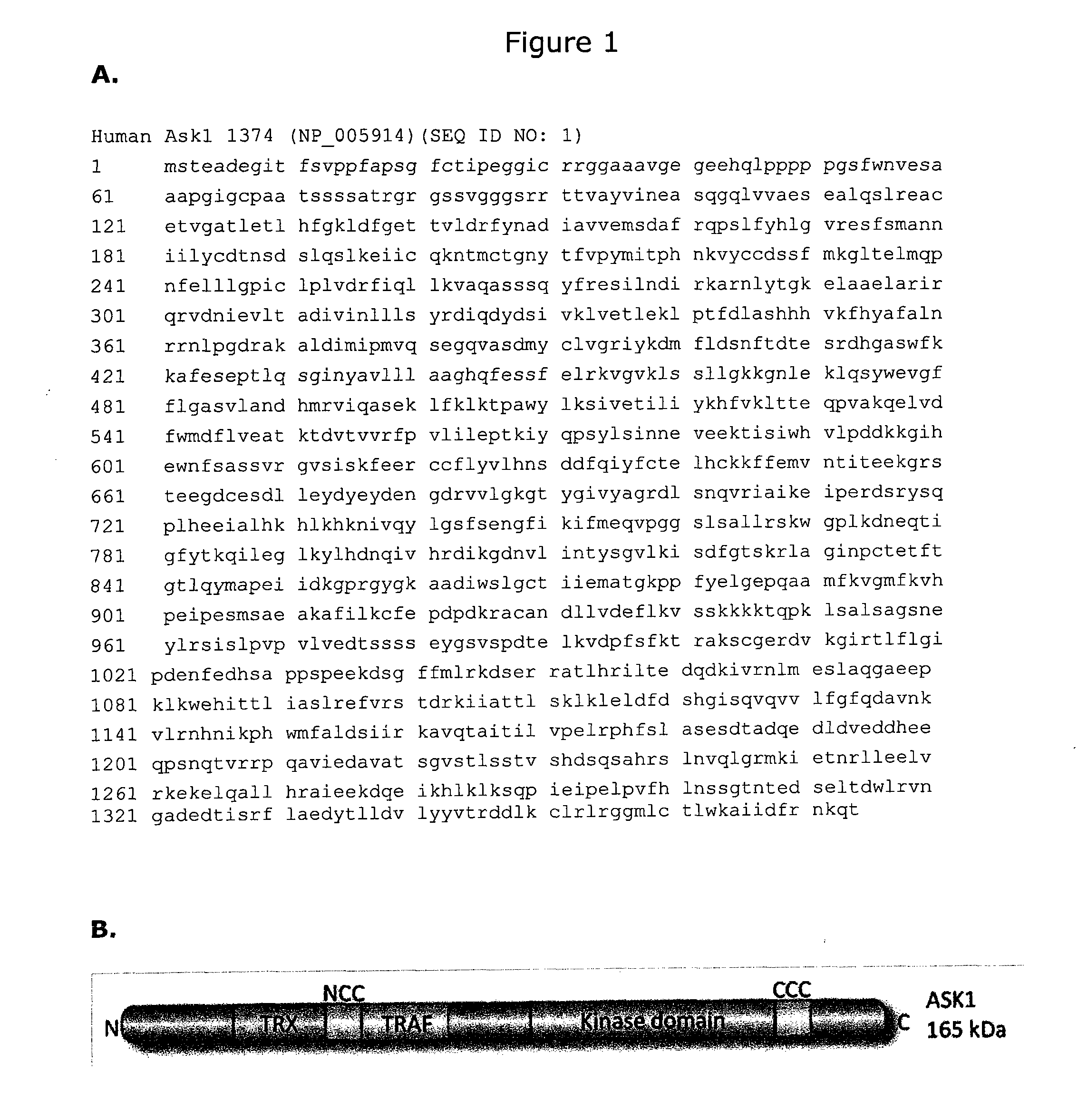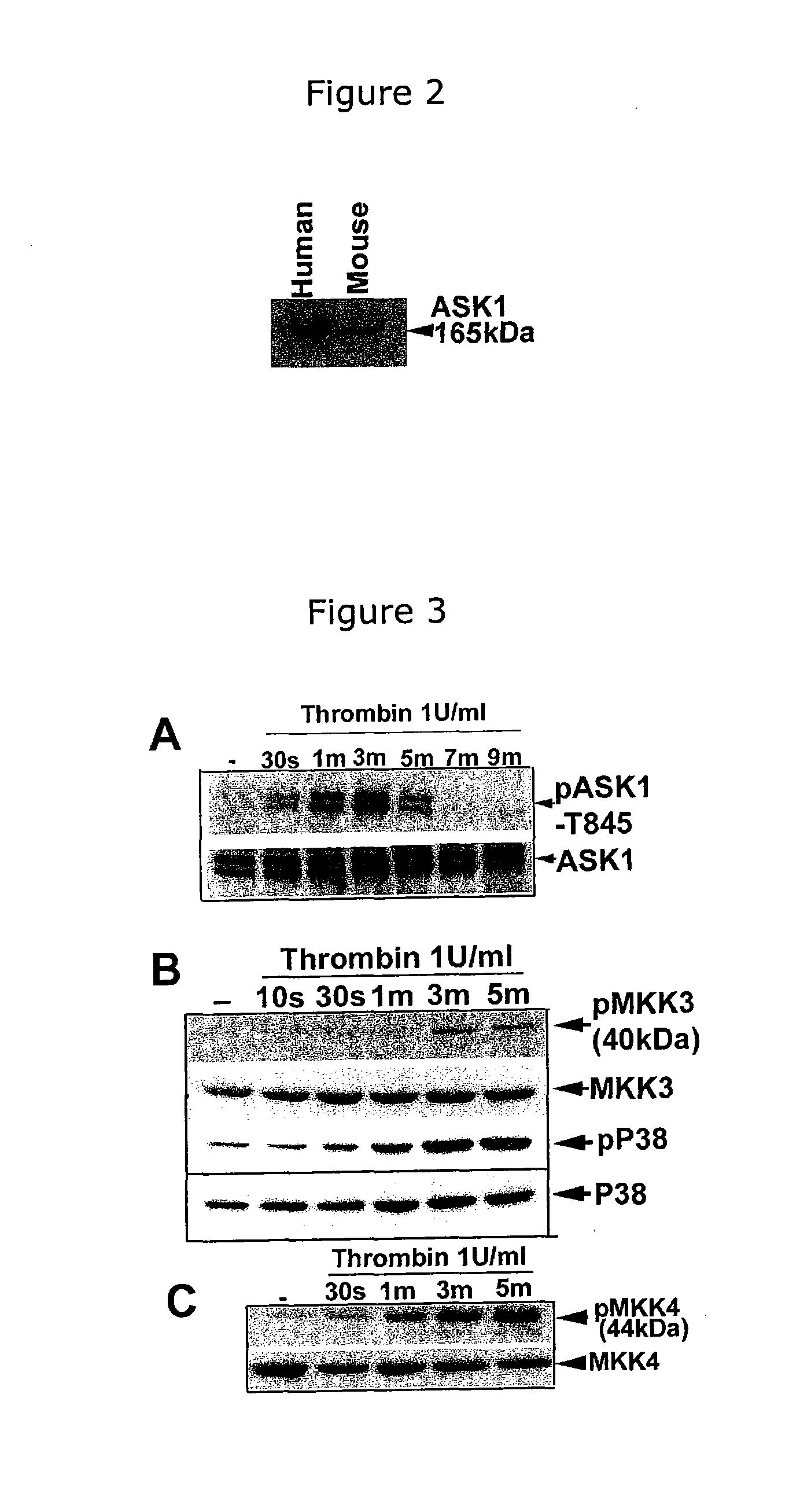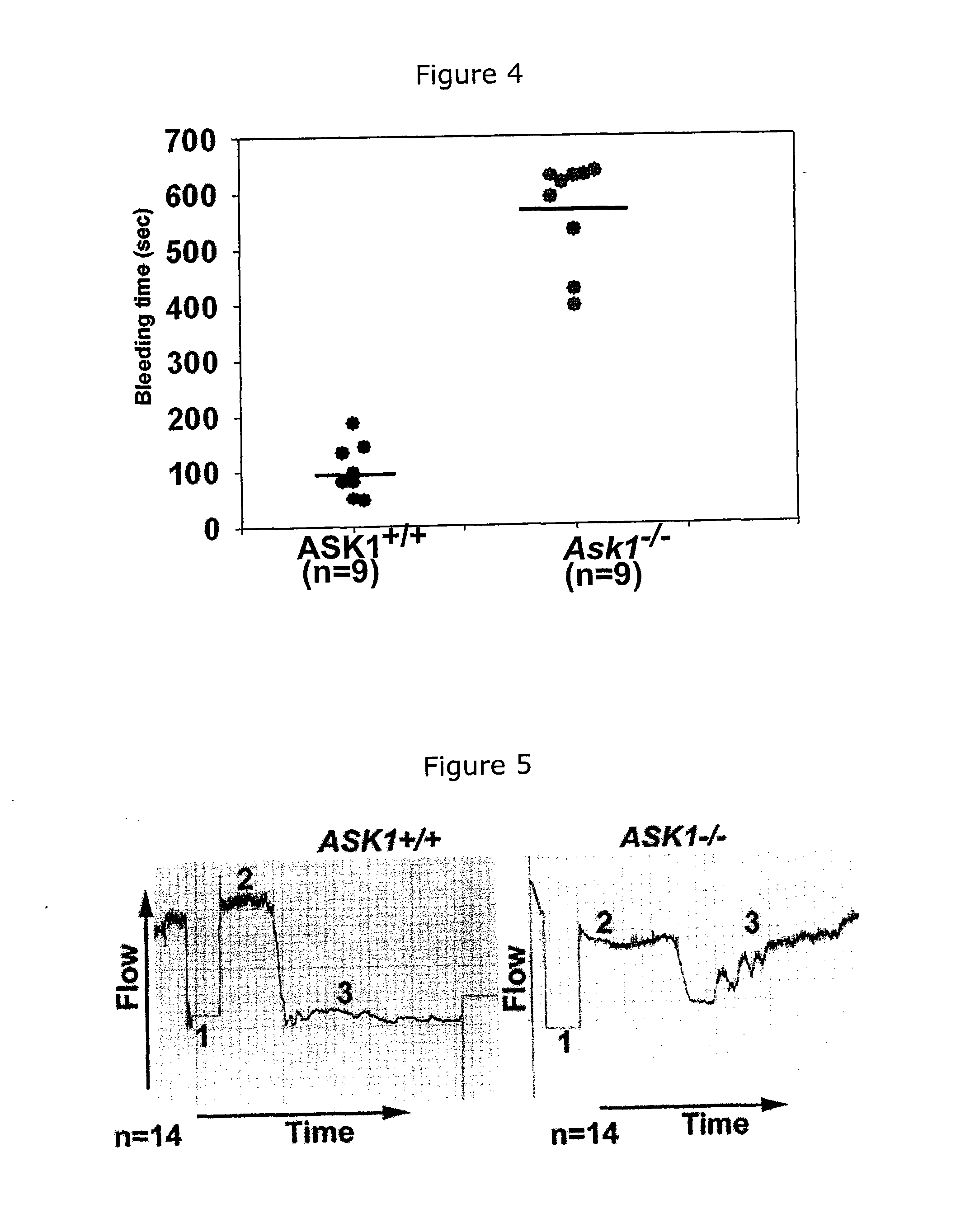Methods of treating and preventing thrombotic diseases using ask1 inhibitors
a technology of ask1 and ask2, which is applied in the field of thrombotic diseases treatment or prevention, can solve the problems of thrombosis, severe bleeding complications, and limitations of current pharmacological inhibitors such as p2y12 and par1 antagonists, and achieve the effect of treating or preventing a thrombotic disease in a subj
- Summary
- Abstract
- Description
- Claims
- Application Information
AI Technical Summary
Benefits of technology
Problems solved by technology
Method used
Image
Examples
example 1
ASK1 Expression in Platelets
[0062]Human platelets were carefully isolated free of red blood cells (RBCs) and white blood cells (WBCs) by differential centrifugation and analyzed for the presence of ASK1 by Western blot analysis using a well-characterized antibody. A substantial amount of ASK1 was expressed in both human and mouse platelets (FIG. 2).
example 2
ASK1 Activation During Agonist-Induced Platelet Stimulation
[0063]A study was carried out to determine whether ASK1 was activated during agonist-induced platelet stimulation. A well-characterized antibody specific to the phosphorylated threonine 838 (T838) of ASK1 was used. ASK1 was found not phosphorylated in resting platelets, but was dose-dependently activated by thrombin as indicated by phosphorylation of T838, in the activation loop. Upon stimulation with as low as 0.05 U-1 U / ml of thrombin, ASK1 was activated rapidly and transiently as evidenced by phosphorylation of T838 (FIG. 3A). In a low percentage SDS-PAGE, ASK1 appeared as a doublet.
[0064]The effects of ASK1 activation in platelets on downstream substrates were also studied. MAPKK3 and MAPKK4 were expressed in platelets and activated by thrombin. Their activation dependent phosphorylation followed a time course similar to ASK1 activation induced by thrombin (FIGS. 3B and 3C). A robust activation of p38 by thrombin was obs...
example 3
Bleeding Phenotype of Ask− / − Mice
[0065]The bleeding phenotype of wild type (WT) mice and Ask1− / − mice of the same genetic background were evaluated by examining the tail bleeding time (FIG. 4). The mean tail bleeding time for WT mice were about 100 s. The Ask1− / − mice had a significantly delayed mean tail bleeding time (576 s), suggesting that Ask1 deficiency results in a severe bleeding phenotype. These results were consistent with the bleeding diathesis observed in older Ask1− / − mice, strongly suggesting that there may be severe defects in thrombotic process in these mice.
PUM
| Property | Measurement | Unit |
|---|---|---|
| bleeding time | aaaaa | aaaaa |
| time | aaaaa | aaaaa |
| time | aaaaa | aaaaa |
Abstract
Description
Claims
Application Information
 Login to View More
Login to View More - R&D
- Intellectual Property
- Life Sciences
- Materials
- Tech Scout
- Unparalleled Data Quality
- Higher Quality Content
- 60% Fewer Hallucinations
Browse by: Latest US Patents, China's latest patents, Technical Efficacy Thesaurus, Application Domain, Technology Topic, Popular Technical Reports.
© 2025 PatSnap. All rights reserved.Legal|Privacy policy|Modern Slavery Act Transparency Statement|Sitemap|About US| Contact US: help@patsnap.com



